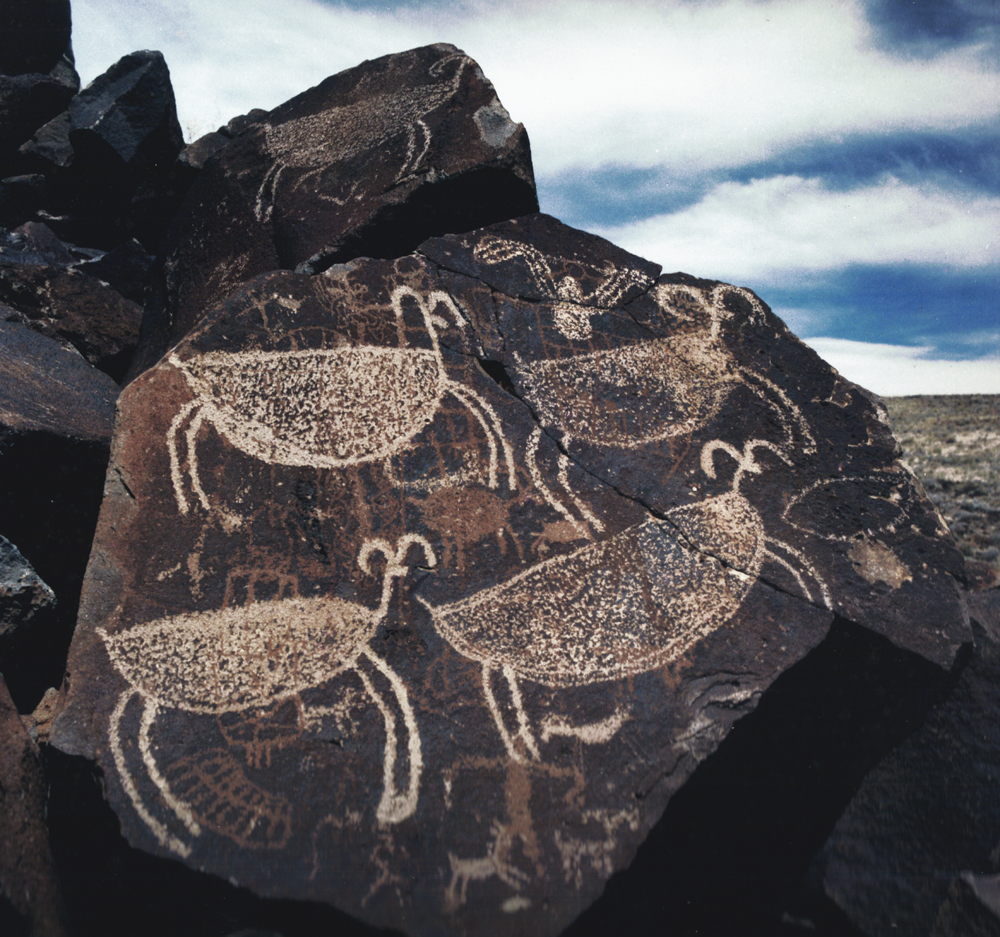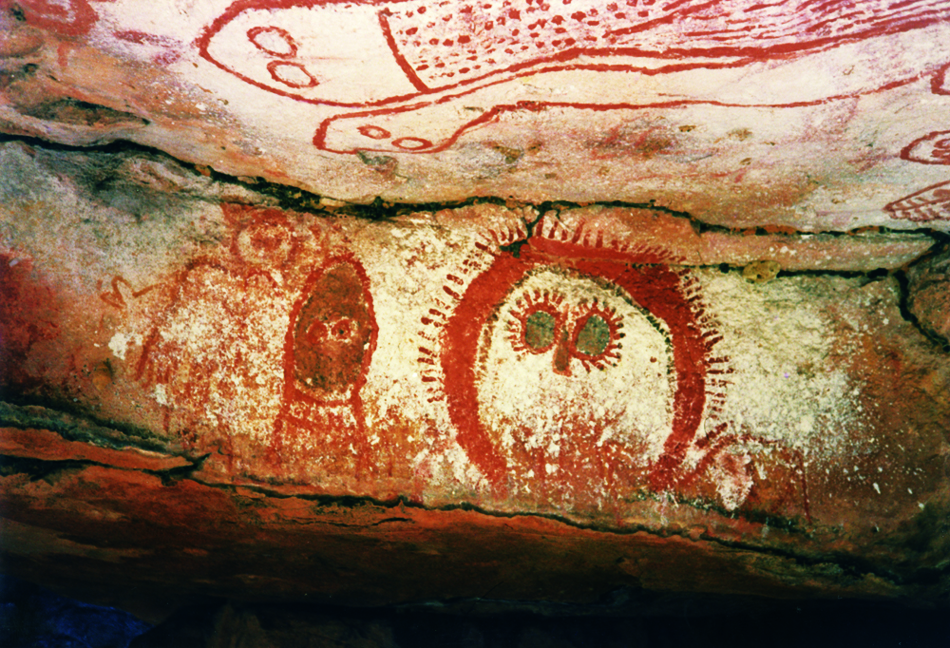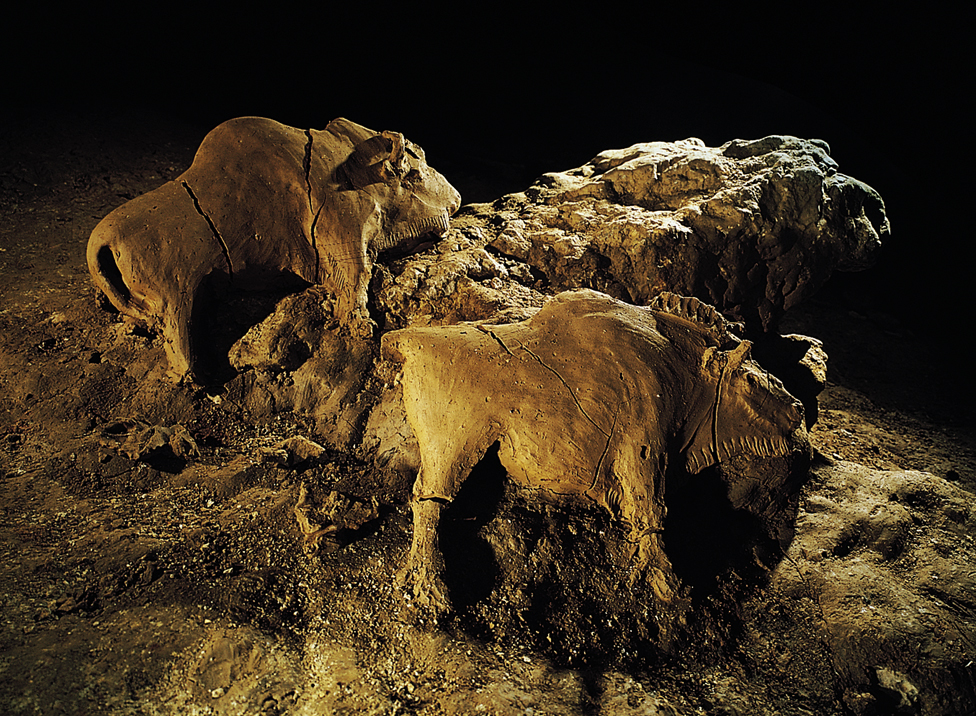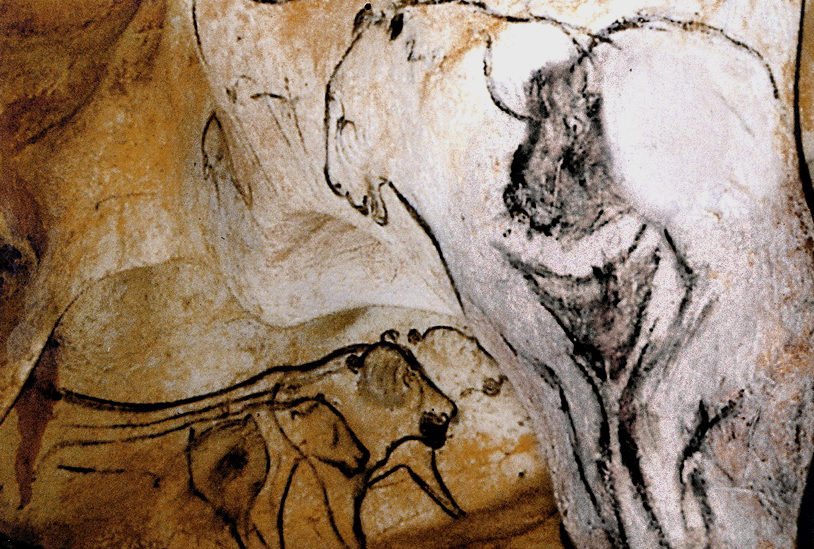


Rock Art Theories IV
|
Rock art theories: a brief overview of the salient theories concerning Palaeolithic rock art in Europe and around the world.
Fertility magic
This theory is not unrelated to the Hunting Magic theory; by painting the animals it would multiply their numbers. By appeasing the animal spirits, the actual animals would reproduce and flourish to provide food.

In Eastern California a major component of the roughly 7,000 year-old Coso engravings (above) is the depiction of the big horn sheep. The Coso people depended on a cycle of rebirth; new plants, seeds, roots, and animals. This in turn was determined by the climate. When the bow and arrow were introduced 1,500 years ago they became much more proficient hunters. In addition, they may have added the dog to their hunting technique, an animal that can be very successful as a hunting partner. There may have been additional pressure from new tribes moving into the area, and maybe a stretch of drought exacerbated the whole situation. As the big horn sheep became more and more rare, it would also have become an even more prestigious trophy, meaning that it was hunted with increasing intensity. Researchers believe the many sheep petroglyphs are a kind of visual prayer, a plea to bring back the big horn.

A similar example might be the case in the Kimberley region of northwestern Australia; Wandjina sites (above) were known as 'increase places'. If animals were retouched then the Wandjina will increase the numbers in that area.
This is also a utilitarian theory, but unlike Hunting Magic, it focuses more on animal fertility and reproduction. One examples might be the 2 clay bisons (below) at Tuc d'Audoubert in southwestern France. The 14,000 year-old clay sculptures have been created and placed, some believe, to depict the act of conception; the female bison is ready to mate, while the Bull is sniffing the air. This may have been the intention of the artist, or it may just be our modern interpretation based on the viewing angle of the scene.

Some researchers argue that the theory applies to human sexuality, but copulation depictions are rare in Palaeolithic European art. Certainly the vulva motif is present which may reflect fertility, but this must be treated with caution because the painted or carved image is often ambiguous.
The Sorcerer of Chauvet is a possible example of fertility magic. Right at the very end of the End Chamber a hanging rock formation reaches down from the ceiling to a metre off the ground. This striking natural relief, as you might expect, is adorned with black drawings and engravings: four lions, one horse, two mammoths, one musk ox and a composition creature - half human and half bison - referred to as the Sorcerer (below). Beside it there is drawn the front view of a woman's lower body with long tapering legs. Her pubic triangle and her vulva are clearly drawn. The Sorcerer's figure folds around and faces in to the pubic triangle. This is certainly a powerful composition, which may reflect fertility magic, however it may alternatively symbolise a relationship between a mortal woman and a supernatural animal spirit. Again, caution is required.

The Palaeolithic female figurines throughout Europe may represent fertility magic. Are the women pregnant? Are they representing sensuality? Or are they more about womanhood? Some researchers believe they were made by woman for woman, perhaps by a mother for a daughter.
One can find examples of rock art around the world to support the Fertility magic theory. However, there are many exceptions within rock art sites, and the images that seem to fit this theory are always open to interpretation.
Visit the Coso engravings:
http://www.bradshawfoundation.com/coso/index.php
Visit the Ice Age Art section to see the figurines:
http://www.bradshawfoundation.com/sculpture/index.php
Visit the Tuc d'Audoubert section:
http://www.bradshawfoundation.com/france/bison-tuc-d-audoubert/index.php
COMMENTS |
|











